From the halls of the U.S. Mint to the pages of American coinage history, few numismatic series evoke the same fascination and scholarly reverence as the Flying Eagle cent. Minted from 1856 to 1858, these small cents marked a major design transition and economic shift for the young nation.
Prior to 1856, the U.S. Mint produced large cents, often dubbed "cartwheels" for their size and weight. But with rising copper prices and increasing public resistance, the Mint began experimenting with a smaller, copper-nickel alloy cent. The Flying Eagle design, created by James B. Longacre, was born.
In 1856, a small number of proof cents were struck for presentation to Congress and other dignitaries to secure legislative approval. These were not just coins; they were patterns – proposals in metal, prototypes that would set the stage for modern U.S. coinage.
The 9 PCGS Recognized Complete Varieties For Proof Flying Eagle Pennies
1. 1856 S-1 1C – Tilted Legend Prototype (~10–12 Known)
This earliest-known die trial features a striking anomaly: the reverse legend “ONE CENT” is noticeably tilted. A die rotation adds to the mystique, causing the eagle to appear as if it's rising in flight. The mirrored surfaces and warm chocolate tones are hallmarks of this highly experimental strike — an audacious first step in the Flying Eagle series.
2. 1856 S-2 1C – The Bold Prototype (Est. 10 Known)
Notable for its strong die diagnostics, including a tail-like line from the “U” in “UNITED” and a high leaf reverse, the S-2 is a study in evolving design. Its golden-bronze hues and bold first digit in the date suggest an aggressive push for legibility and aesthetic refinement. A low survival rate makes it a favorite among die-variety collectors.
3. 1856 S-3 1C – The Congressional Proof (~500–600 Known)
One of the more widely struck of the 1856 proofs, the S-3 was intended for wider presentation, especially to members of Congress. With vibrant mirrored fields and vertical polishing lines, these coins represent the Mint’s first refined proof strikings in this series. The devices exhibit mild cameo contrast, evidence of early experimentation with frost and field texture.
4. 1856 S-4 1C – The Transitional Phantom (Est. 10 of ~20 Struck)
This is the only Flying Eagle Cent with a Low Leaves reverse, an element not officially introduced until 1858. Most likely struck in mid-1858 using a leftover obverse die, this rare anomaly fuses the first and final design stages of the series. Its historical context makes it a prized example of transitional die usage and Mint economy.
5. 1856 S-5 1C – The Enigma (Est. 15 Known)
Shrouded in mystery and seldom seen, the S-5 is often debated in terms of its die pairing sequence and mintage timeline. It features subtle deviations in strike and alignment, serving as a reminder of how dynamic the Mint’s proof coinage efforts were during this experimental period.
6. 1856 S-9 1C – The Redbird
The most available 1856 proof and likely the most common variety representative for the type. Research suggests S-9, like some of the others, was struck in late 1857. S-9 is also struck from the same dies later reused for S-4, it offers critical clues about reuse practices at the Mint.
7. 1857 1C – The Silent Stunner (~485 Struck)
Often overshadowed by the 1856, the 1857 proof is, ironically, far rarer as a whole. With jet-black mirrors and frost-heavy devices, these coins evoke the aesthetic apex of the series. Its eagle appears to soar against a night sky—a dramatic composition unmatched in other issues.
8. 1858 Large Letters 1C – The Rarest Official Issue (Est. 80 Struck / ~50 Known)
Featuring diagnostic die file marks and a robust, fully realized eagle, the 1858 Large Letters proof is perhaps the most historically satisfying example. It represents the culmination of Mint experimentation, now applied to regular issue coinage. Rich golden-bronze hues and pinpoint detail bring the Flying Eagle design to life.
9. 1858 Small Letters 1C – The Final Evolution (Est. 120 Struck)
Likely born from the Mint’s 12-piece proof sets, the Small Letters variant closes the chapter on the Flying Eagle saga. Featuring Anthony C. Paquet’s modified reverse, its “AM” in “AMERICA” spacing and low-relief design suggest continued refinement. The color palette — golden-apricot, rose, and soft lavender — adds warmth to this historical coda.
A Legacy in Metal
Each variety not only marks a unique production decision, but also captures the artistry, urgency, and ingenuity of a pivotal moment in U.S. Mint history. For historians and numismatic purists, this collection offers a rare opportunity to study the full arc of a short-lived yet profoundly impactful series. From prototype to pattern to proof, the Flying Eagle cent embodies America’s ambition in a time of change. You can view the Screaming Eagle Collection - the #1 Flying Eagle Cents Proof Variety Set (1856–1858) on the PCGS Set Registry.
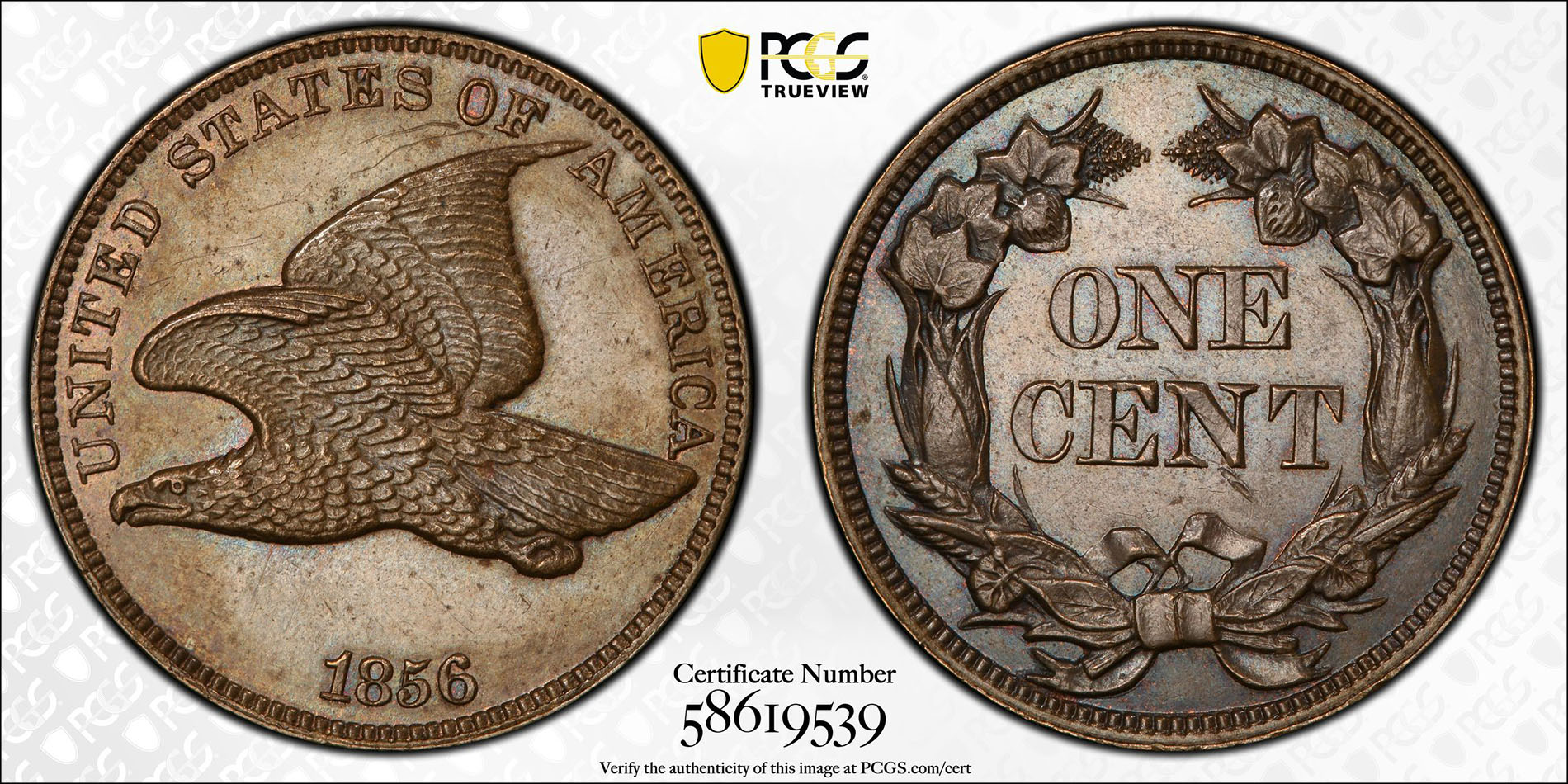
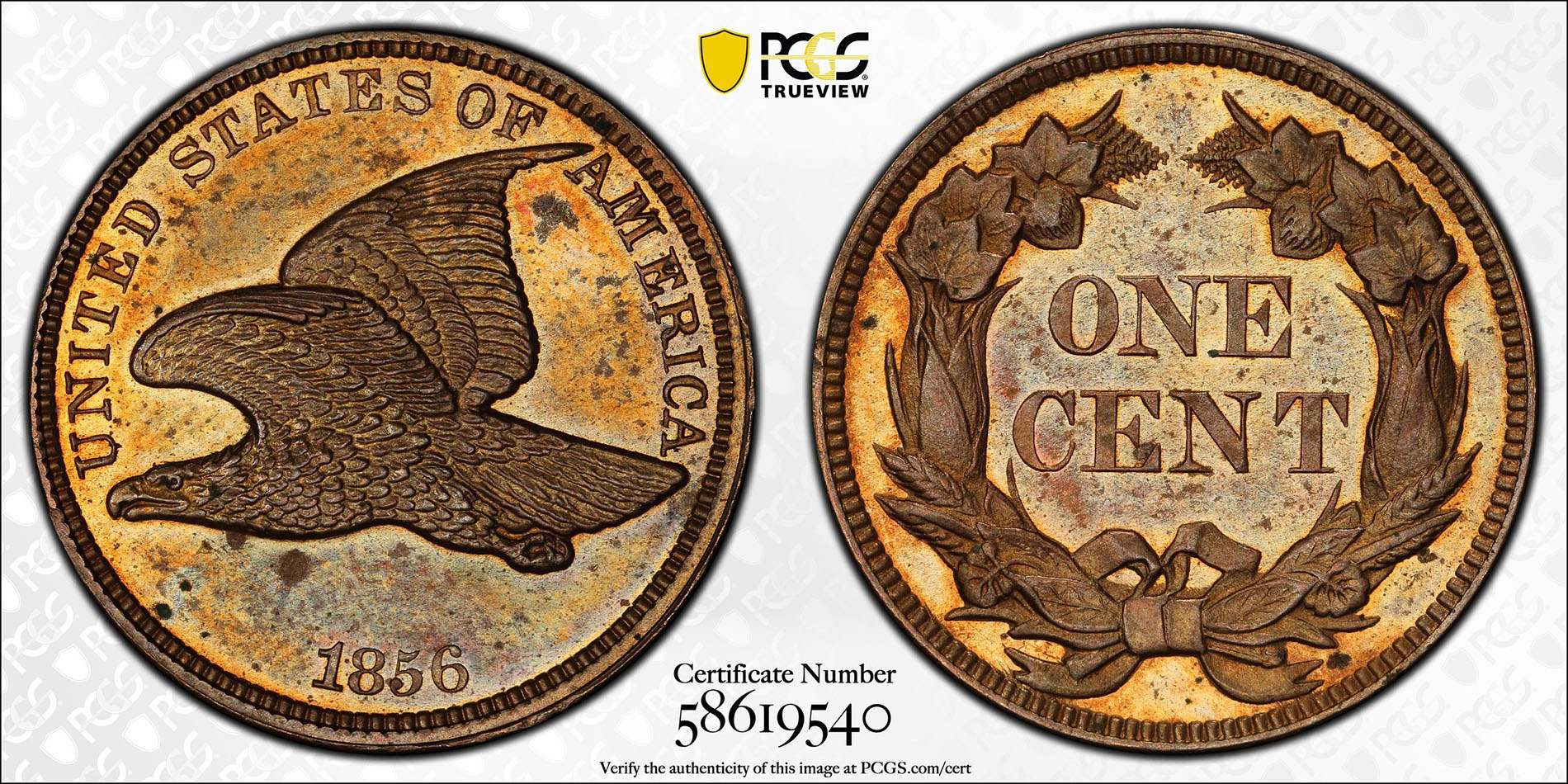
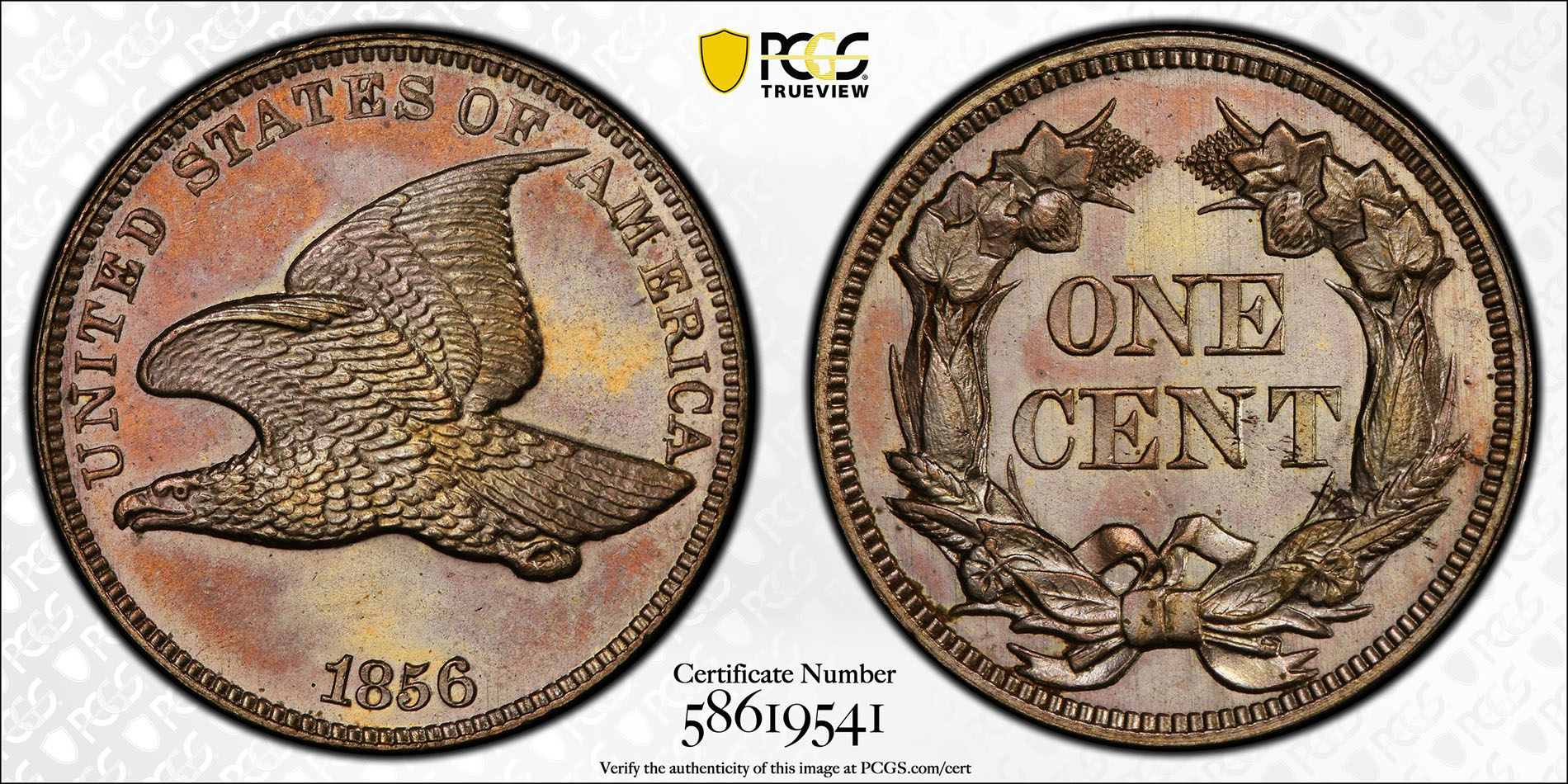
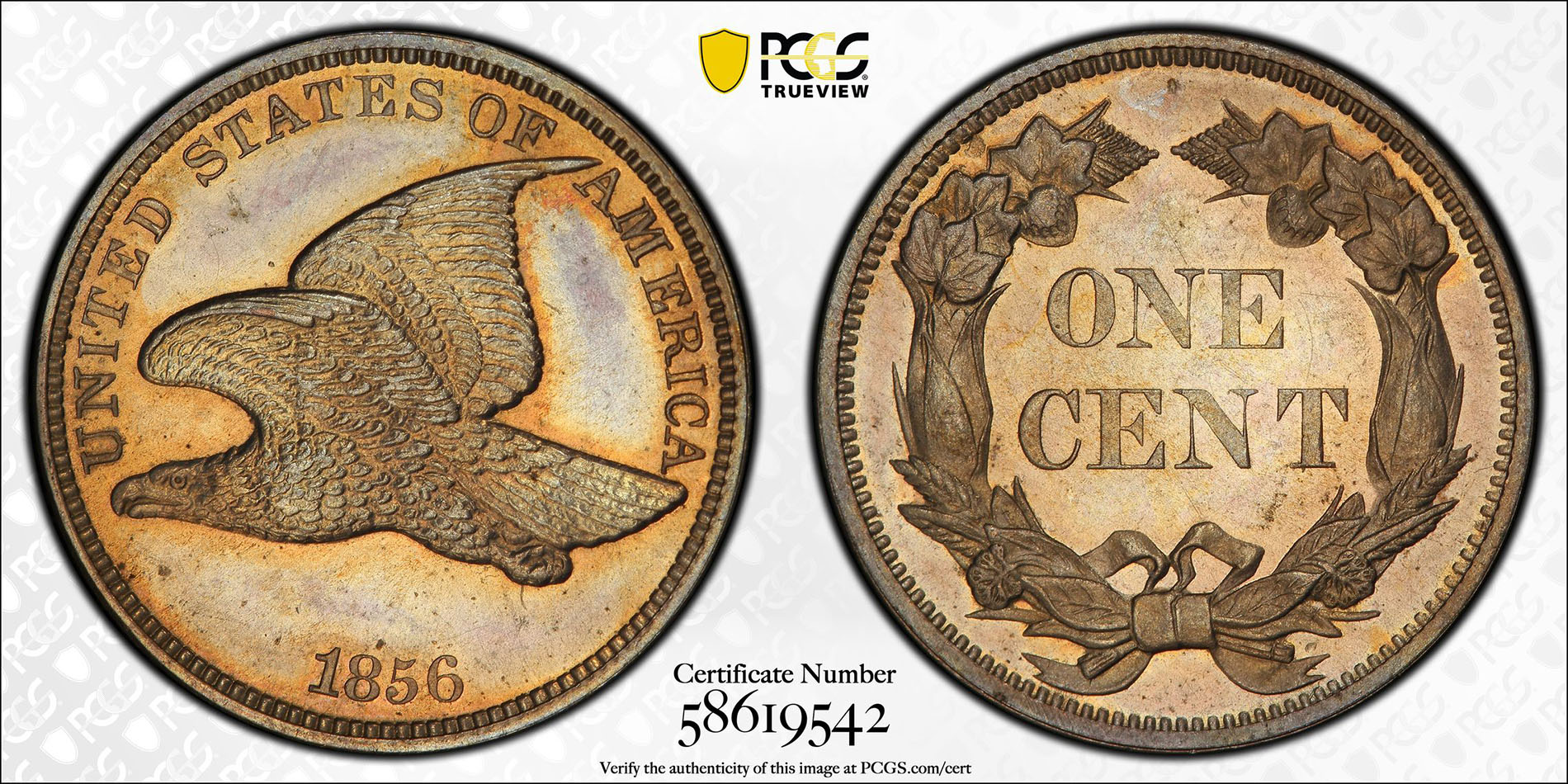
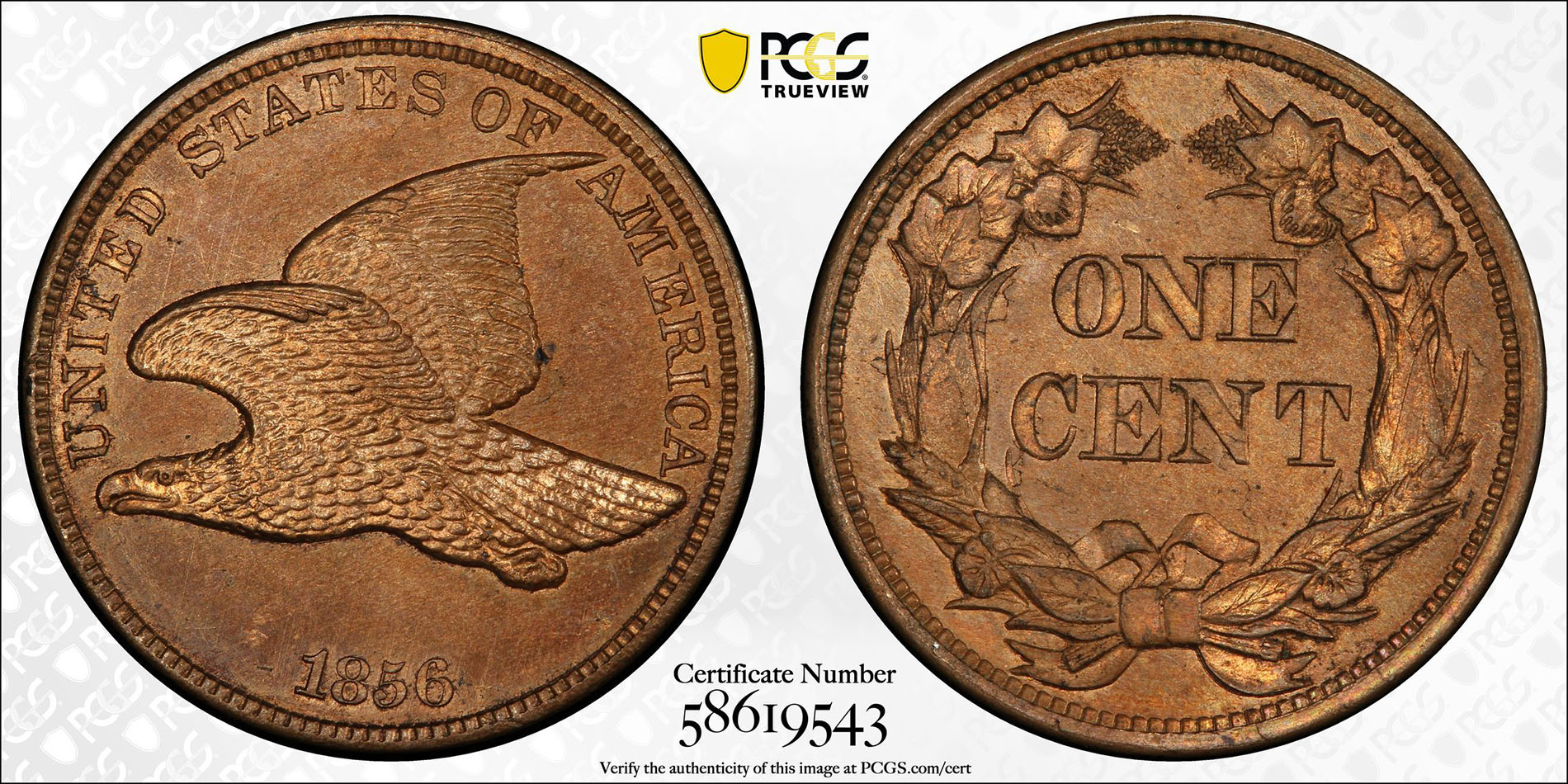
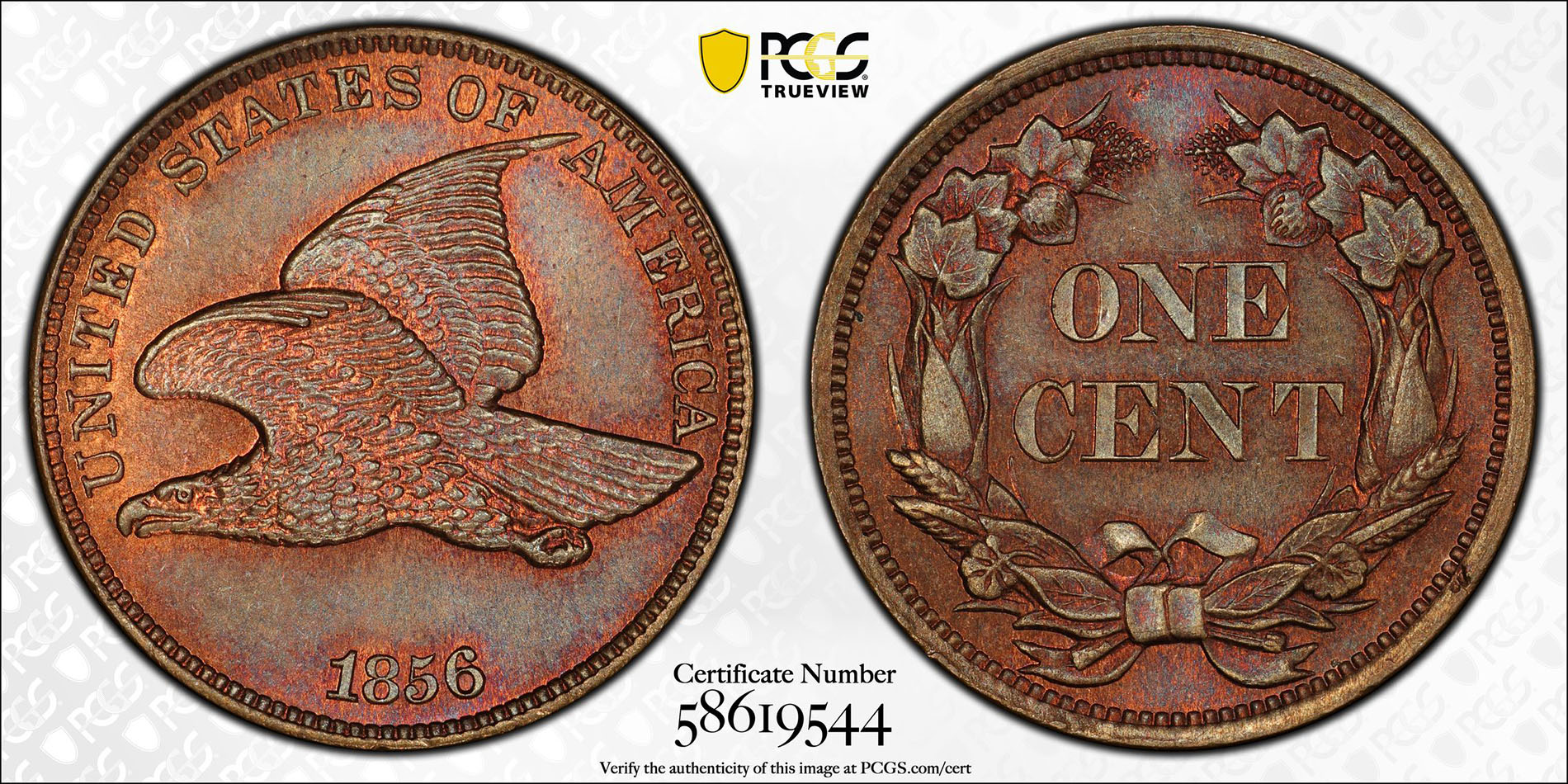
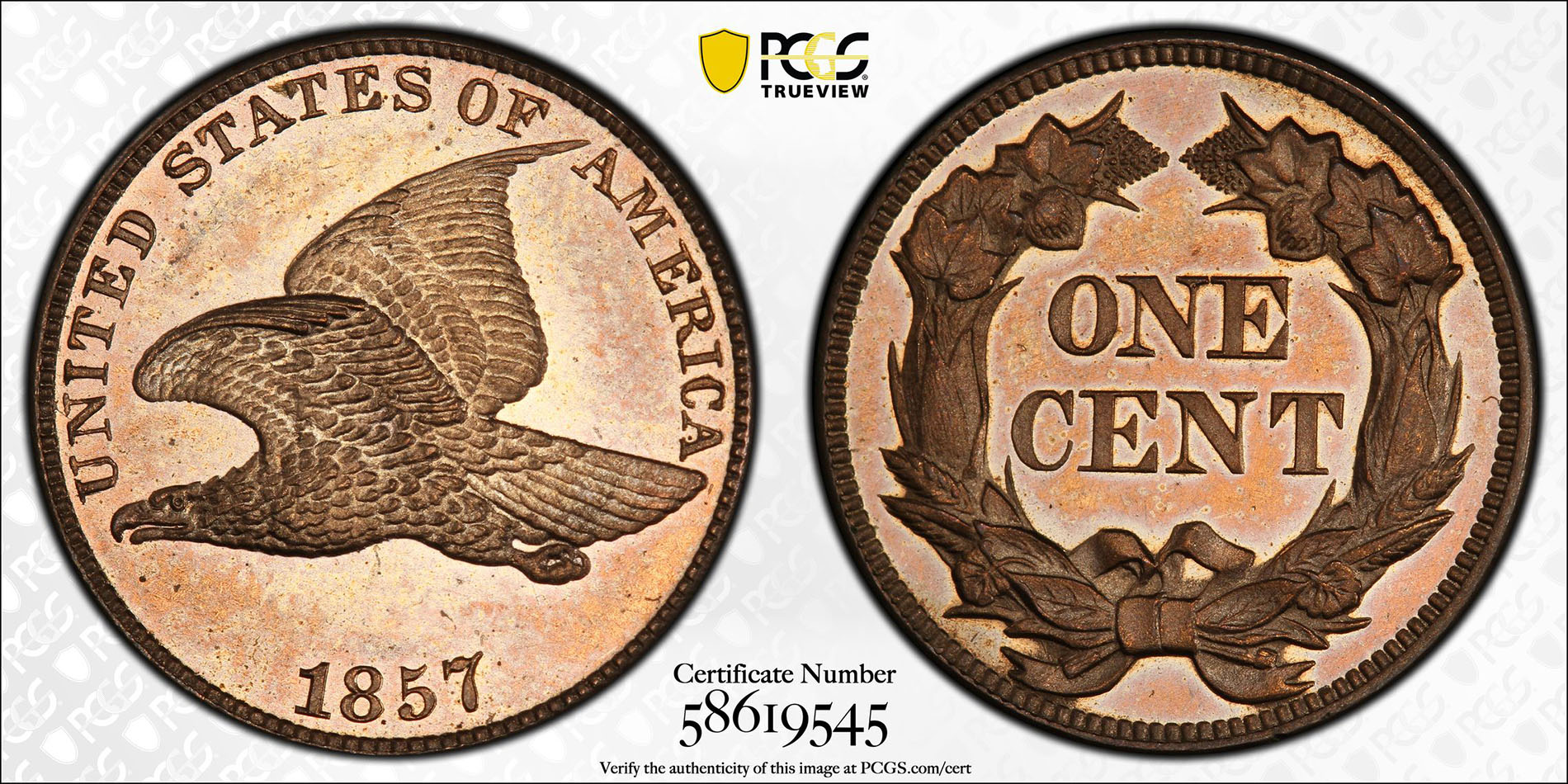
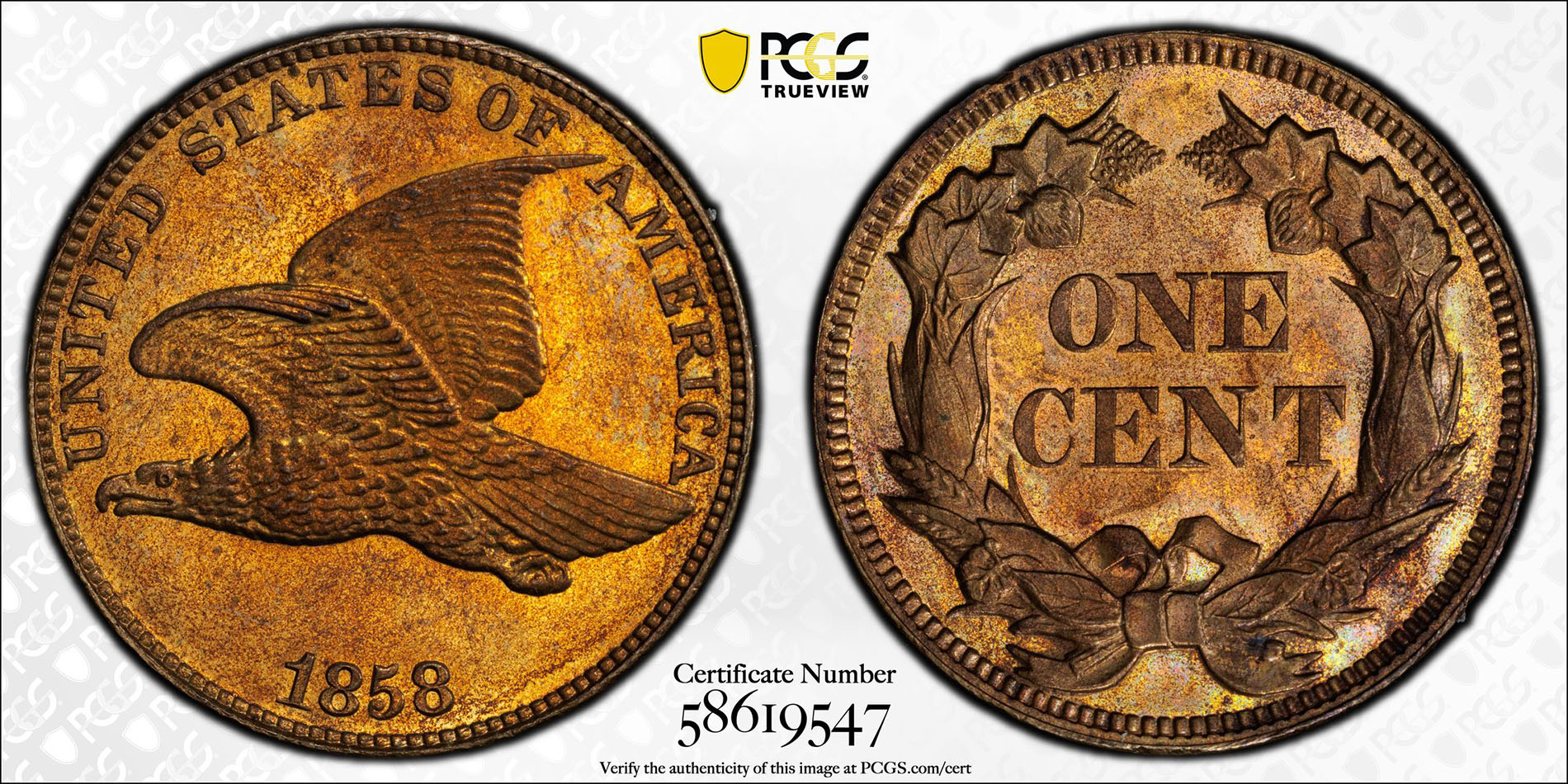
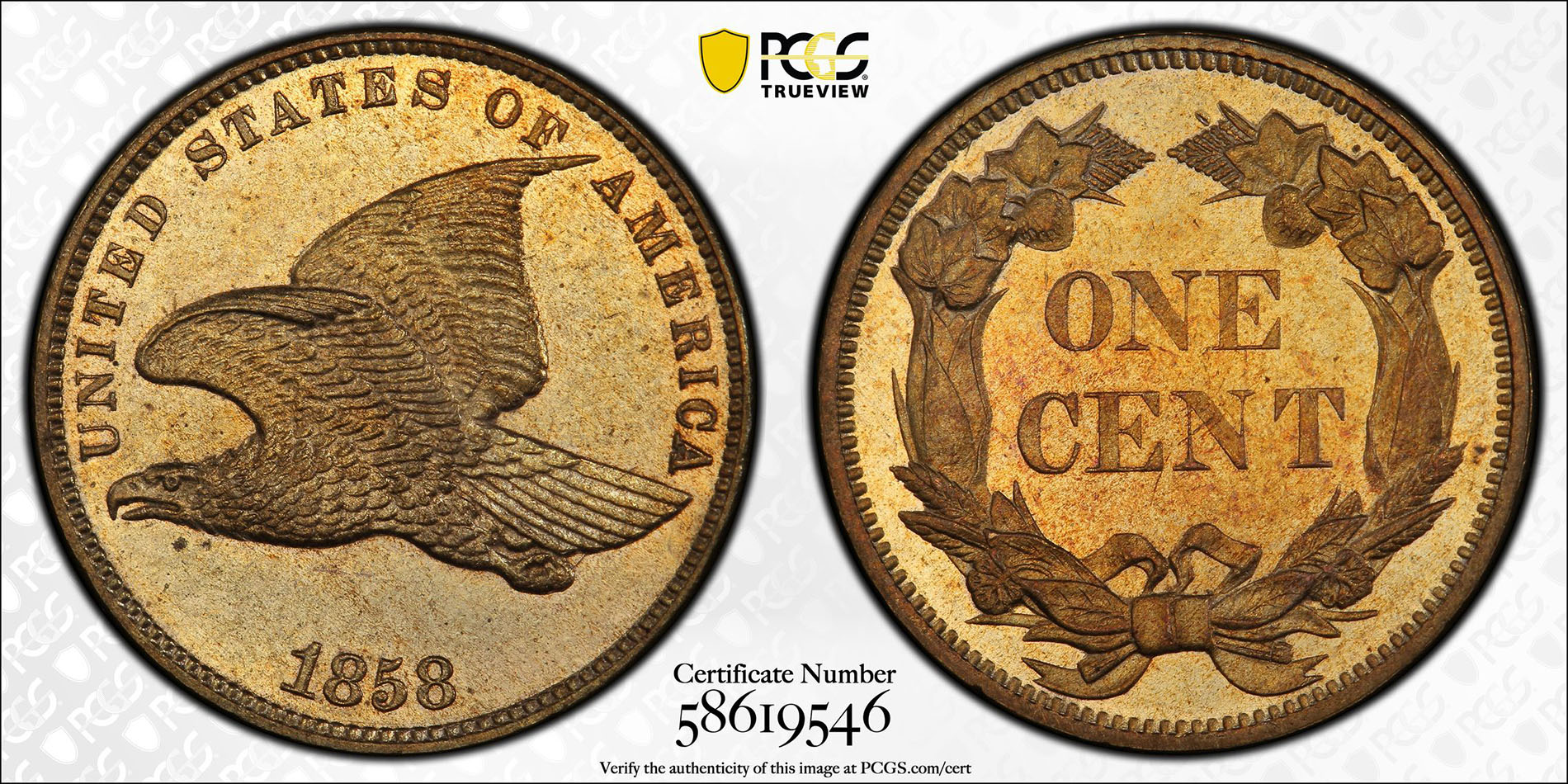
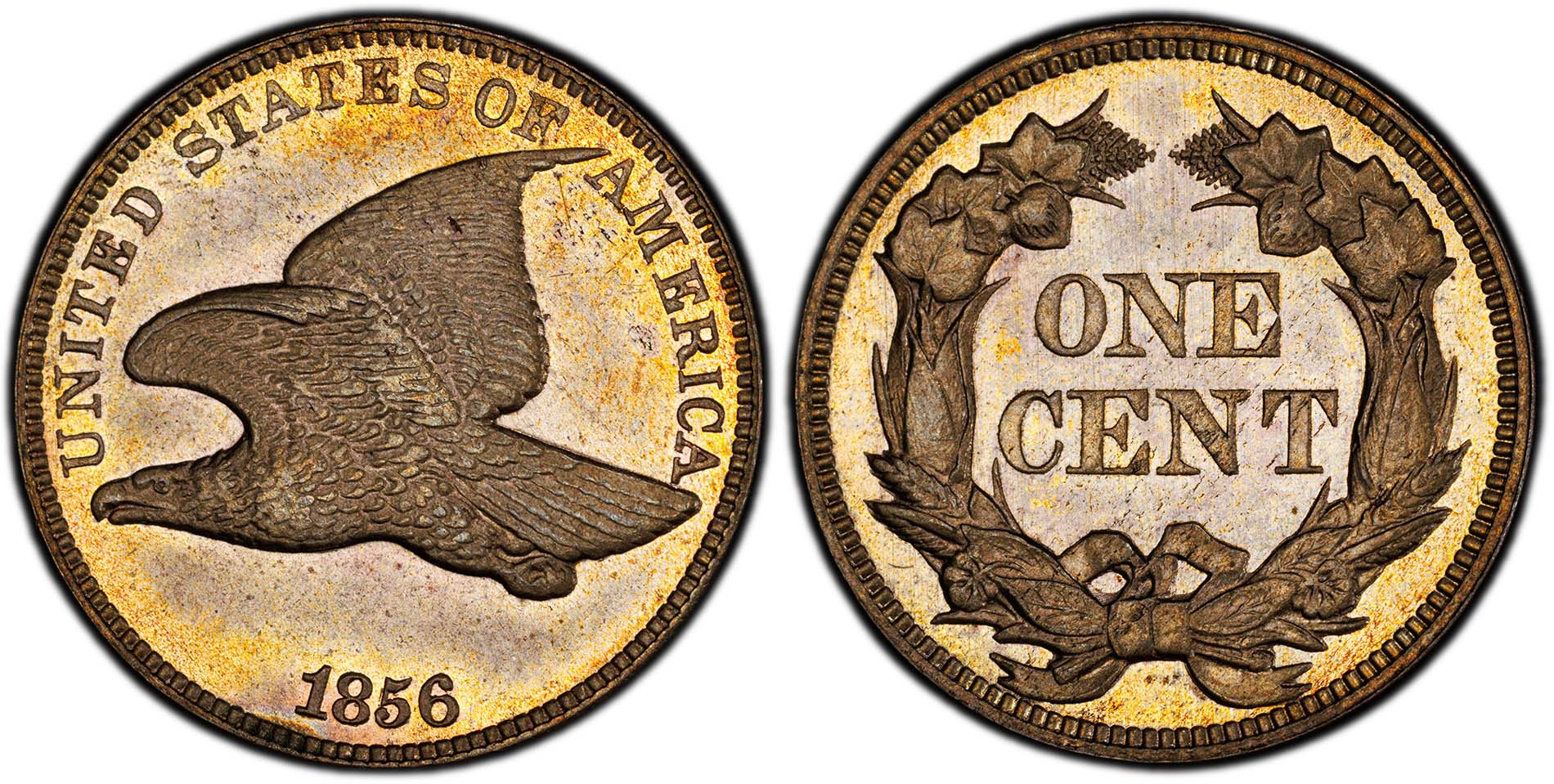


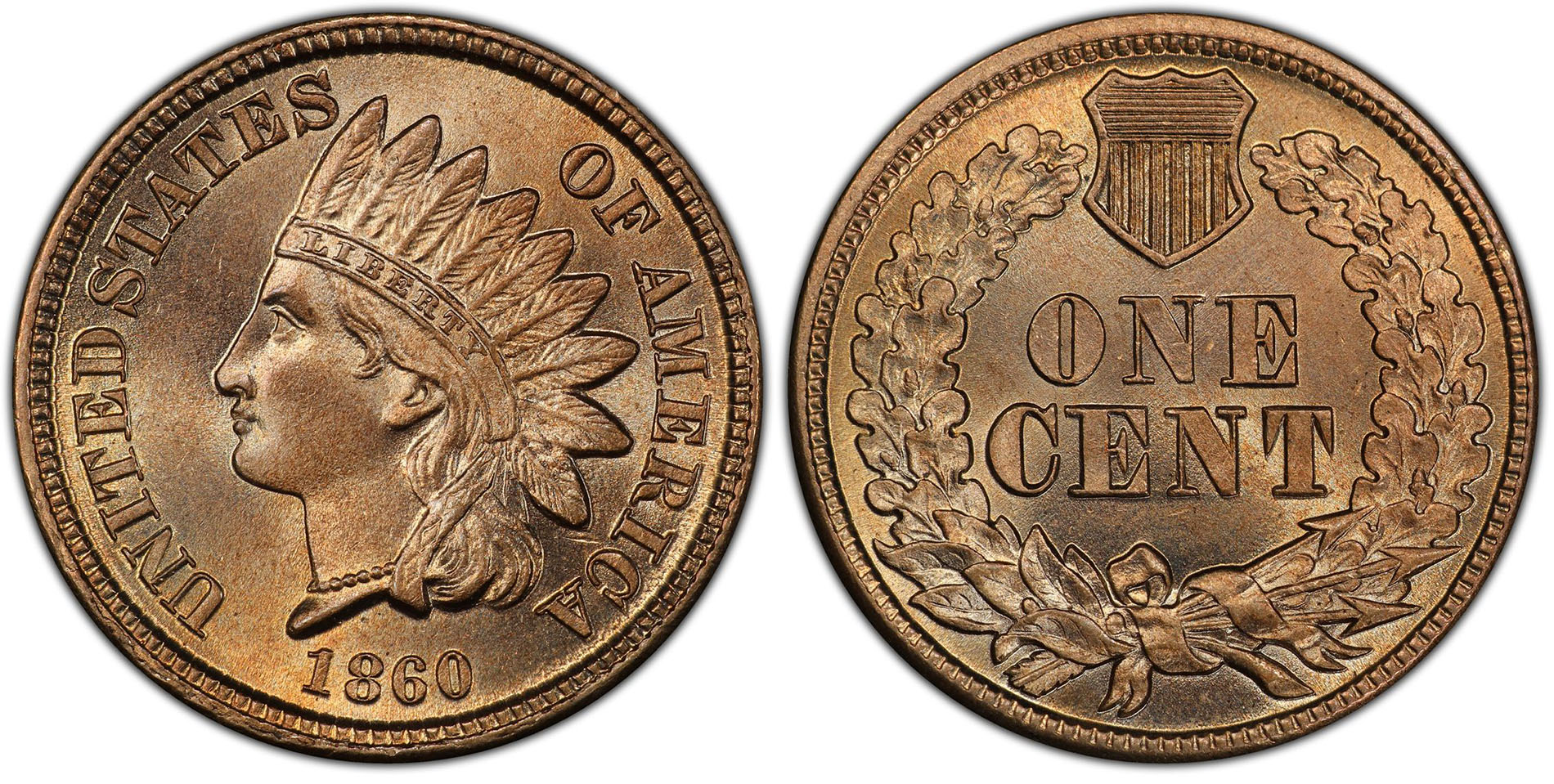

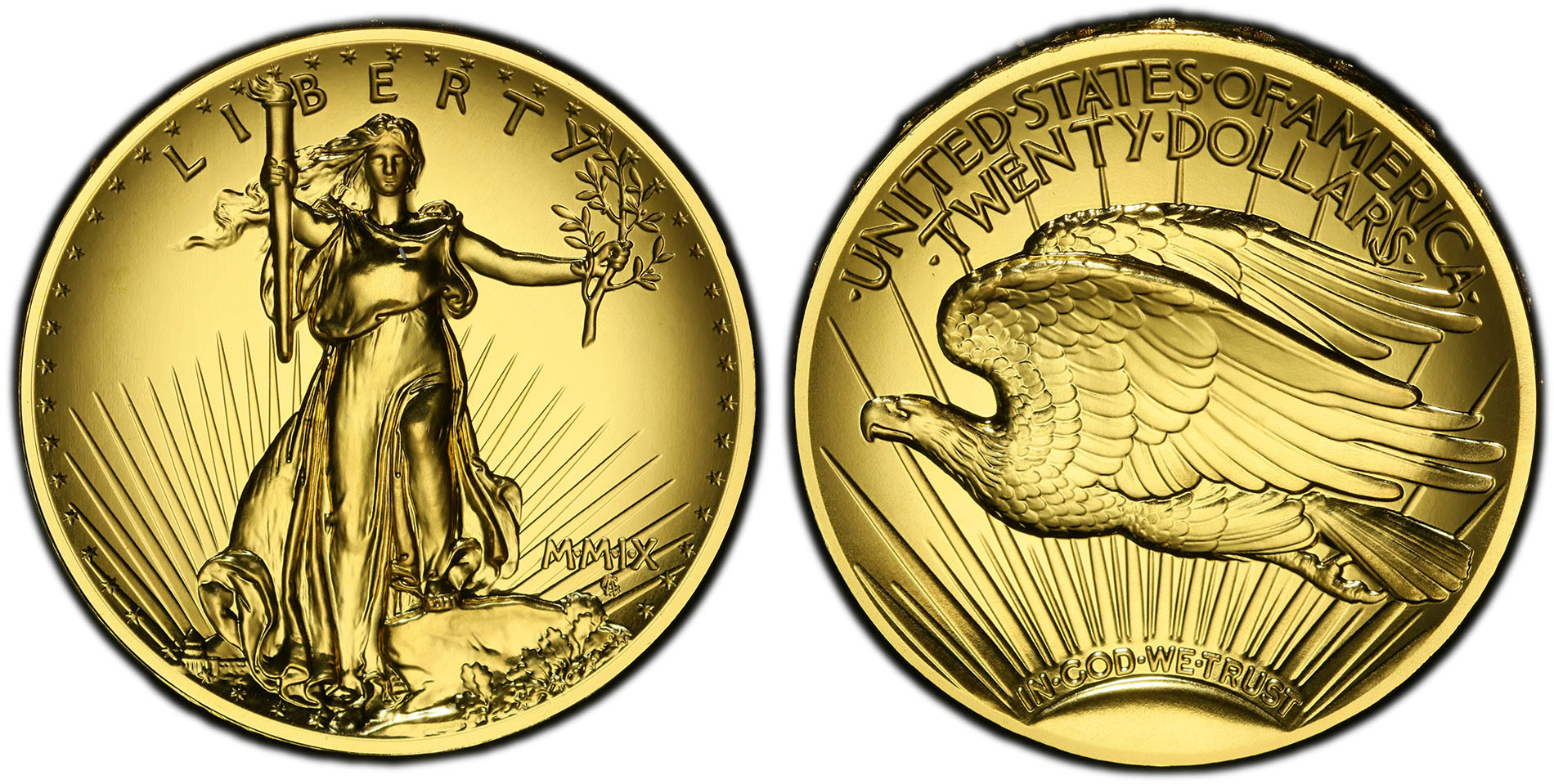
 Copper & Nickel
Copper & Nickel
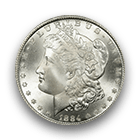 Silver Coins
Silver Coins
 Gold Coins
Gold Coins
 Commemoratives
Commemoratives
 Others
Others
 Bullion
Bullion
 World
World
 Coin Market
Coin Market
 Auctions
Auctions
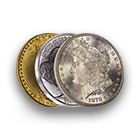 Coin Collecting
Coin Collecting
 PCGS News
PCGS News